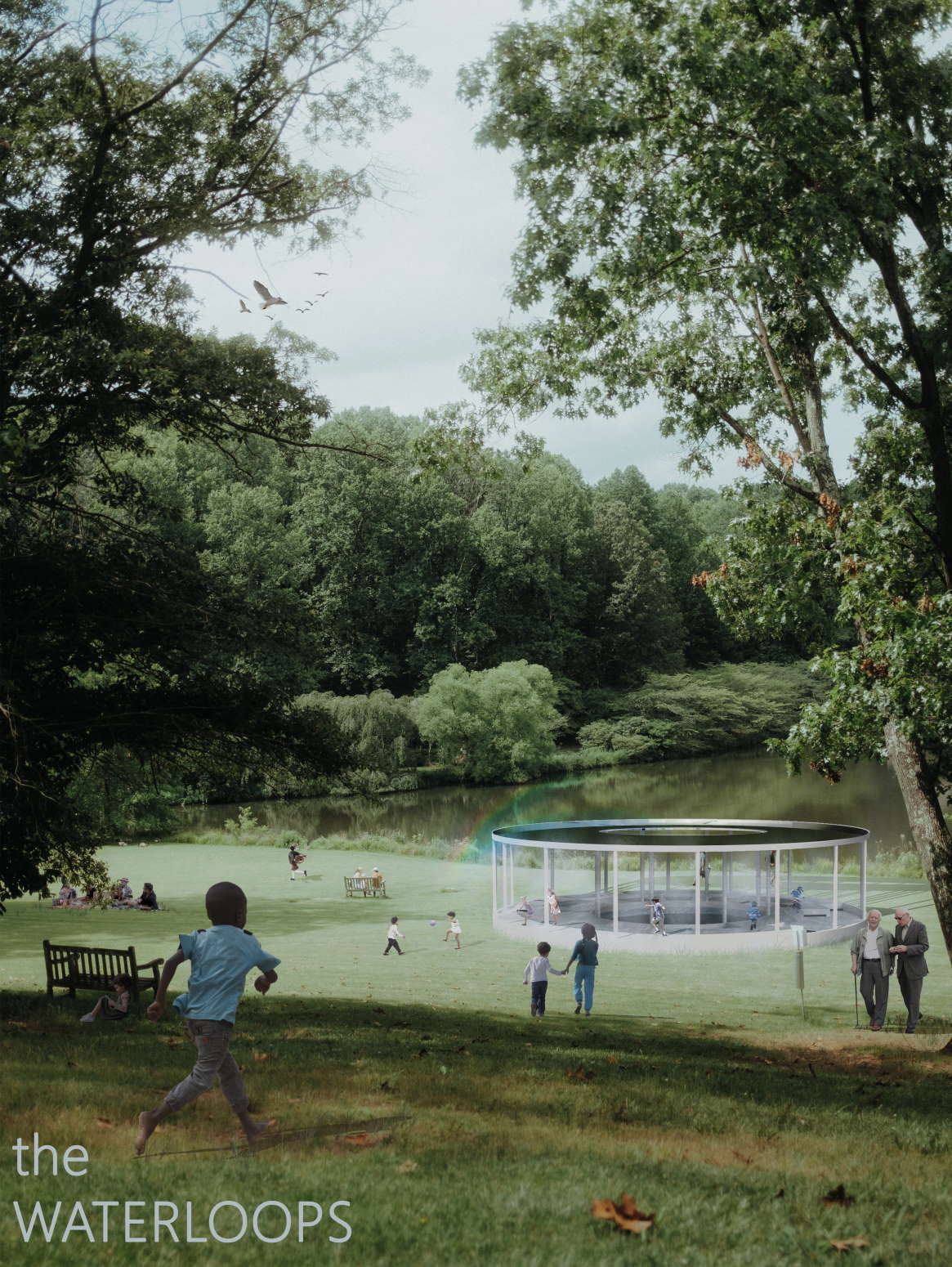The Waterloops

Category
Daylight investigations - Region 2: Central and Eastern Europe and the Middle East.
Students
Emilia Rogowiec
Julia Kudła
Barbara Talarek
Karolina Staszewska
Anna Zieziula
School
Wrocław University of Science and Technology
Country
Poland
Download
Download ↓
The Waterloops
Have you ever tried to imagine an urban space from a child’s perspective? Does it look like an attractive place to explore the city? Although children constitute a pretty significant part of any society, their existence and needs in public spaces are often missed. Not only does this state indicates the quality of life in the cities but also affects children’s physical and mental health development. An exemplary child-friendly urbanism approach may liaise with natural phenomenon effects presented as pavilions which allow children to play there and learn by doing experiments in the meanwhile.The Waterloops Pavilion could improve the role of the environment in the well-being of children in the cities thanks to its main idea of blurring the border between play and leisure. It presents daylight and water relation by a bunch of experiments that encourage children to explore the physical phenomenon. Both water and daylight are motivating tools to learn, which satisfy curiosity about the world, stimulate integration, keep calm, give an opportunity to discover, experiment and many more. Not to mention its aesthetic combination which attracts users and makes them get through the pavilion.
Nowadays usually outdoor urban spaces lack in playgrounds and places to play which are essential for kids’ growth and development. To make cities healthier from this point of view, an important issue is to understand how they play and how it is recommended by experts in that field. According to research, young people should have an opportunity to play freely and take risks in a controlled, safe way.
The Waterloops’ main aim is to show the relation between water and daylight interactions as a physical phenomenon. First of them is caustics surface, a parallel beam of light rays envelope from a source of light, in the case of daylight it is considered as a point at infinity, the sun. The rays are reflected from hypersurfaces or get refracted. The caustics create a gorgeous pattern by the flowing surface of the water in the upper part of the installation. It also casts a shadow on the walking part and causes a magical atmosphere there with a swaying caustic motif.
Many research indicates that water has calming features so that the water surface above the recreation part reassures the pavilion’s users. The canopy is inclined towards the interior of the pavilion which makes the water falls down there smoothly. Additionally, in certain places, it gets through sprinkler systems which generate mist in the promenade. When it comes to the contact with sun rays the daylight enters a water drop which causes its refraction and reflection inside it. When the light leaves it creates a rainbow. The water is fed there by the use of a turbine system powered by solar energy. The surface of the roofing is made out of solar glass provided with photovoltaic system. All installation pipes and equipment are supplied inside the steel structure poles. Light, modular and easy-to-transform construction makes the whole pavilion’s transport seamlessly. Thanks to its feature it could be located in almost every place around the world. The pavilion’s shape was designed with a reference to children’s habit to run around, according to Takaharu Tezuka’s theory and research. The form is also adjusted to circular sun movement during the day. It is kept simple in order not to limit children’s creativity. Places to rest and sit are provided there as well. The height of the mentioned blocks made of translucent wood lets them walk there freely among water ponds. There are also colorful ETFE flexible bubbles, filled with water, of size which enables one to climb them and even jump. The water inside casts shadows, swaying by each user’s movement.
The Waterloops, which was designed with a view to promoting high-quality playgrounds for children, offers a wide variety of interesting forms of activities. Providing all users of the city, also the youngest ones, with enough attractive spaces to spend time outdoor is an inseparable part of healthy and high-quality urbanism. A children-friendly urban planning approach corresponds with designing the pavilion where kids can be loud, spontaneous, play and take risks which is a part of their healthy growth.

































